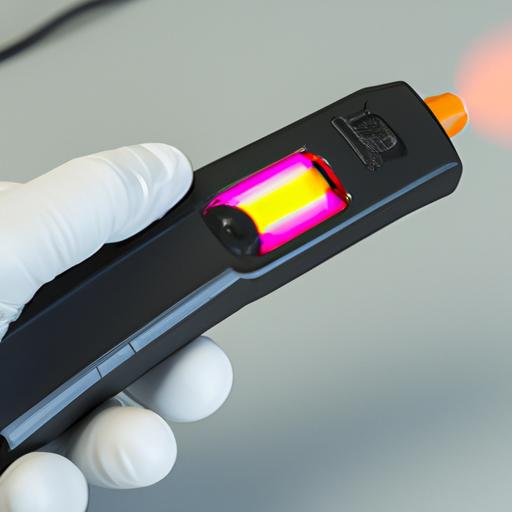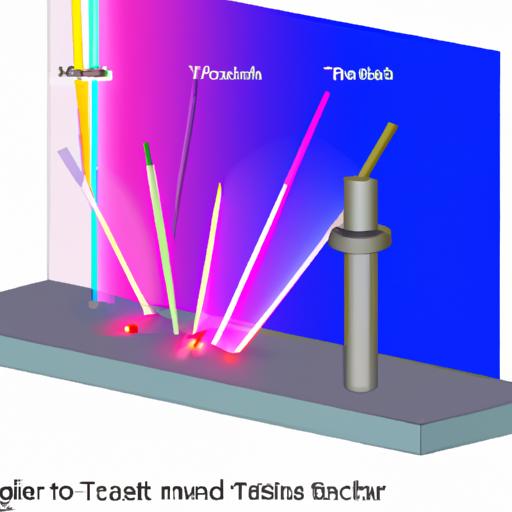Lasers have become increasingly popular in various industries, from healthcare to manufacturing. However, the safety of lasers, especially tia laser technology, is a critical concern that needs addressing. In this article, we will explore the potential risks and benefits of tia laser technology and provide you with essential safety precautions. So let’s dive into the world of lasers!
Tia Laser Là Gì?

Định Nghĩa Và Giải Thích Công Nghệ Tia Laser
Tia laser là công nghệ sử dụng những tia ánh sáng phân tử để thực hiện các quá trình chính xác và cực kỳ tinh vi trong các ngành công nghiệp khác nhau. Tia laser có khả năng tập trung ánh sáng vào một điểm nhỏ hơn so với các loại đèn thông thường, giúp cho việc thao tác và kiểm soát vật liệu trở nên chính xác hơn.
Công nghệ này được ứng dụng rộng rãi trong y tế, sản xuất công nghiệp và khoa học, giúp cho các quy trình thao tác trở nên nhanh chóng và đạt hiệu suất cao hơn.
Loại Tia Laser Và Công Dụng
Hiện nay, có nhiều loại tia laser khác nhau được sử dụng trong các ngành công nghiệp khác nhau. Mỗi loại tia laser mang lại lợi ích riêng biệt và được sử dụng vào mục đích cụ thể.
Các loại tia laser phổ biến bao gồm:
- Tia laser CO2: Sử dụng để cắt kim loại hoặc vật liệu khác nhau.
- Tia laser Nd:YAG: Sử dụng trong y tế để loại bỏ các khối u, đốt sạch răng và làm mịn da.
- Tia laser diode: Sử dụng để sản xuất các thiết bị điện tử như máy tính và điện thoạ
Tùy thuộc vào ứng dụng của công nghệ tia laser, có thể cần sử dụng loại tia laser phù hợp để đảm bảo hiệu quả công việc và an toàn cho người sử dụng.
Tia Laser Hoạt Động Như Thế Nào?

Giải Thích Khoa Học Đằng Sau Công Nghệ Tia Laser
Tia laser là một trong những ứng dụng tiên tiến của công nghệ laser hiện đại, được sử dụng rộng rãi trong việc chế tạo các sản phẩm và vật liệu. Các tia laser này hoạt động theo cơ chế cảm ứng ánh sáng (light-induced excitation), giúp kích thích các phân tử hoặc nguyên tử bên trong vật liệu.
Khi tia laser xuyên qua vật liệu, chúng gây ra một số hiện tượng quan trọng như hấp thụ ánh sáng, đánh tan (ablation), và ion hóa (ionization). Vì vậy, tùy thuộc vào tính chất của vật liệu và thông số kỹ thuật của máy laser, các tia laser có thể được điều chỉnh để thực hiện các công việc khác nhau.
Tương Tác Với Các Loại Vật Liệu Khác Nhau
Tia laser có thể tương tác với hầu hết các loại vật liệu khác nhau, từ kim loại và gỗ đến da và nhựa. Tùy thuộc vào mục đích sử dụng, các loại tia laser khác nhau sẽ được sử dụng để tạo ra các hiệu ứng khác nhau.
Ví dụ, trong y học, tia laser được sử dụng để loại bỏ sự phát triển của mô liên kết và không gây đau. Trong công nghệ sản xuất, tia laser được sử dụng để cắt, khoan và hàn các vật liệu kim loại hoặc phi kim. Tuy nhiên, việc sử dụng tia laser cần tuân thủ chặt chẽ các quy định an toàn để tránh gây hại cho con người và môi trường.
Potential Risks of Tia Laser
Tia laser technology has many benefits, but it also poses some serious health risks that cannot be ignored. Here are some potential dangers associated with tia lasers:
Health risks associated with exposure to tia laser
Exposure to tia lasers can have adverse effects on your health, including eye damage and skin burns. The high intensity of the beam can cause permanent damage to your retina, leading to partial or complete blindness. Additionally, the absorption of the laser’s energy by your skin can result in painful burns.
To prevent these health risks, always wear appropriate protective equipment such as goggles and gloves when handling tia lasers. It is also essential to limit exposure time and maintain a safe distance from the laser.
Common injuries caused by improper use
Improper handling of tia lasers can lead to various injuries such as cuts, bruises, and lacerations. The intense beam emitted by the laser could accidentally hit you or someone else nearby if not handled carefully, causing severe injury.
It is vital to receive proper training before handling tia laser machinery and ensure that only qualified personnel operate them. By adhering to safety protocols and regulations, we can minimize the risk of injuries caused by improper use of tia lasers.
Các Biện Pháp An Toàn Khi Sử Dụng Tia Laser
1. Trang Bị Thiết Bị Bảo Vệ Khi Tiếp Xúc Với Tia Laser
Khi làm việc với tia laser, bạn cần đảm bảo sự an toàn của mình và người xung quanh bằng cách trang bị các thiết bị bảo vệ như kính chắn tia UV hoặc khói, áo khoác chống tia UV, khẩu trang và găng tay chống phản chiếu. Nếu tiếp xúc trực tiếp với tia laser, bạn nên đeo kính bảo hộ có khả năng chống lại tia laser.
2. Đào Tạo Đầy Đủ Cho Người Sử Dụng Máy Tia Laser
Để giảm thiểu nguy cơ tai nạn trong quá trình sử dụng máy tia laser, người sử dụng nên được đào tạo đầy đủ về cách sử dụng thao tác máy, cách kiểm tra an toàn và biện pháp phòng ngừa rủi ro. Nếu không có kinh nghiệm hoặc không đủ kiến thức để sử dụng máy tia laser, bạn nên nhờ đến những người đã được đào tạo và có kinh nghiệm để hỗ trợ.
Việc sử dụng tia laser có thể mang lại nhiều lợi ích cho nhiều ngành công nghiệp, nhưng cũng tiềm tàng rủi ro về an toàn. Bằng cách áp dụng các biện pháp an toàn khi làm việc với máy tia laser, chúng ta có thể đảm bảo tính an toàn và hiệu quả trong việc sử dụng công nghệ này.
Benefits of Tia Laser Technology
Tia laser technology offers various benefits across different industries, including healthcare and manufacturing. Let’s explore some of the advantages in detail:
Positive impacts on various industries such as healthcare and manufacturing
Tia lasers have revolutionized the healthcare industry, making surgeries less invasive and more precise. These lasers can target specific tissues without damaging nearby healthy tissue, reducing the risk of complications during surgeries. Besides, tia lasers are also used in dermatology to remove tattoos, birthmarks, and other skin imperfections.
In the manufacturing industry, tia lasers are used for cutting, welding, and drilling purposes. This technology provides greater precision than traditional methods and is ideal for tasks that require high levels of accuracy.
Increased precision and efficiency in tasks that require high levels of accuracy
One of the most significant benefits of tia laser technology is its ability to perform highly accurate tasks with minimal error. Unlike traditional methods, which rely heavily on manual labor and can be time-consuming, tia lasers can complete tasks quickly and accurately.
Moreover, tia lasers are versatile machines that can work with various materials such as metal, glass, ceramics, plastics, and even fabrics. With this level of flexibility comes increased efficiency in completing complex projects within tight deadlines.
Overall, the positive impacts of tia laser technology cannot be overstated. Its versatility has made it a valuable tool across many industries while increasing precision and reducing risks during surgical procedures.
Conclusion
In conclusion, tia laser technology has undoubtedly brought significant advancements in precision and efficiency to various industries. However, it is crucial to understand the potential risks associated with tia laser exposure and take appropriate safety measures when handling such machinery.
Protective gear and proper training for those who handle tia lasers are necessary steps to ensure their safe use. It’s also important to note that tia laser technology should only be used by professionals who have undergone extensive training and have a deep understanding of its intricacies.
By following the proper safety guidelines, we can safely reap the benefits of tia laser technology while minimizing its potential risks. Remember, safety first!